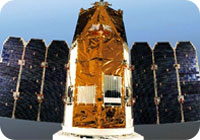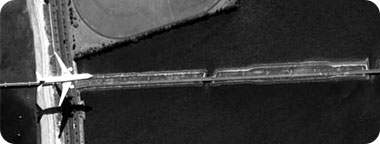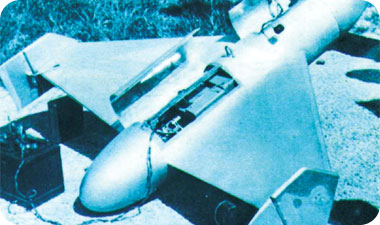The space infrastructure of the State of Israel places it in the first row of the developed countries in the world in terms of space technology. Below are milestones in the Israeli space program, key individuals and trends for the future - Part III * Published in Galileo, September 2008

to part A - The history of the Israeli space program
to part B - A small space agency and a large industry
Directorate of Space in the Ministry of Defense
In 1981, Prime Minister and Minister of Defense at the time, Menachem Begin, approved in principle to begin a program to develop and manufacture the Ofek observation satellite for the IDF. The satellite was supposed to operate in combination with a launch system. The project was carried out by the Space Factory of the Israel Aerospace Industries under the supervision of the Ministry of Defense.
The Ministry of Defense manages a multi-year program that includes the development and production of a series of observation satellites, including various assemblies, the production of launchers, as well as improvements to a ground station for controlling and monitoring the satellite, where intelligence information is also produced and distributed among the various IDF agencies. The ground segment is operated by engineers from Bat-Space (command and control) and the IDF (direction, production, decoding and distribution of the information). The Ministry of Defense supervises the implementation of the project through the Directorate subordinate to the head of the Directorate for the Development of Weapons and Production Infrastructures in the Ministry of Defense (MoD). Also, the Ministry of Defense finances the ongoing operation of the ground segment.
The Ministry of Defense's space program is headed by Prof. Brigadier General Haim Ashad. According to Ashad, the main reason for Israel's entry into space is strategic, and also stems from the fact that international law permits the launch of satellites. "The first paper I wrote as head of R&D at Amman was in 1978. The visit of Egyptian President Sadat was on the horizon, and the question that arose was, how can we continue to photograph the Sinai Peninsula. We started looking into how we can continue to photograph areas that are prohibited for airplanes to fly, but are not prohibited for satellites to pass through" (quote from an interview with Amnon Barzilai, "Haaretz", August 30, 2003).
In one of his public statements on the subject of space, Ashad also noted that since the establishment of the space program, the state has invested more than two billion dollars in it. According to him, although Israel's investment in its space program is orders of magnitude smaller than in the United States and Europe, "Israeli achievements in space are impressive." He explains that "the secret is in the focus." In the 20 years of developing the space programs, we focused on two types of missions: remote sensing using mini-satellites, and communication satellites. Israel has an independent capability in the development and construction of mini-satellites, and as far as we know these satellites are the best in the global space market today."
Independent launch capability into space

Israel launches Ofek satellites by itself and from its platform. The launcher is a three-stage solid fuel rocket called Shavit. A comet is capable of launching a payload of 300-250 kg into low orbit (LEO). Israel has neither the capabilities nor any future pretensions to launch itself into a Geostationary Orbit (GEO, i.e. an orbit where the satellite is placed at an altitude of 36,000 km and above the equator; at this position, the satellite's orbit time around the Earth is equal to the Earth's rotation time on its axis, And so, in fact, the satellite is "fixed" over that point). Because of this limitation, Israeli communication satellites have been launched and will be launched for the foreseeable future using foreign commercial launchers.
There is also a possibility, which has not yet been realized, to launch with the help of an Israeli launcher from a place outside Israel's borders. On top of that, various publications and studies point to the possibility of aerial launch from airplanes. The launch of the self is of considerable importance: a contribution to the image; contribution to deterrence; Economic contribution and security contribution.
Israel avoids launching to the east, with the direction of the Earth's rotation, for fear that parts of a launcher (and parts of a satellite, in case of failure) will fall on the territory of unfriendly countries. Therefore, all launches are carried out over the sea, to the west, and the launcher must also compensate for the rotation of the Earth. The same launcher, had it launched to the east, would have been able to place up to 50% more weight in orbit.
Academy activity in the field of space exploration
Satellites and space telescopes were developed and built in Israeli universities:
Texat project(Gurwin-TechSAT): A tiny satellite developed and built in the mid-nineties by scientists at the Technion, as part of the Asher Space Research Institute and in collaboration with the Department of Physics and the Faculty of Aeronautical and Space Engineering, the Aerospace Industry and the Ministry of Defense. The satellite weighed 50 kg, and modern space technologies were integrated into it. Most of the hardware was donated by Israeli companies, who wanted to test new ideas and original developments in a space environment. The satellite was launched on a Russian rocket in March 1995, but the launch failed and the satellite was not placed in orbit. Following this, another satellite was built, Techsat 2. This satellite was successfully launched in July 1998, and is currently in orbit around the Earth. The satellite is still operational, almost a decade after its launch.
Project Towax(TAUVEX): A space telescope in the ultraviolet field, the result of a proposal by Dr. Noah Brosh, Prof. Hagai Netzer and Prof. Ilya Leibovitch from the Department of Physics and Astronomy at Tel Aviv University. This is a joint project of the Israeli Space Agency and the Indian Space Agency, and is part of a large-scale international project for the study of celestial objects in various spectral fields. The telescope will be launched, according to the plan, during the year 2008, on an Indian satellite. TAUVEX's ability to scan large areas of the sky will help focus the US Hubble Space Telescope on important phenomena in space exploration.

The Israeli space industry continues to develop the satellites of the State of Israel, for a variety of applications - defense, commercial, civil and scientific. Simultaneously with the development and production of satellites and launch vehicles, Israel maintains several international collaborations with various countries.
In light of Israel's considerable dependence (in the civil and military spheres) on GPS satellites, Israel must guarantee itself the ability to function even in the event of damage to the service or its prevention. The Israeli partnership in the European Galileo project is an important step in this direction. Israel must assess the vulnerability of its space system, both in the ground segment and in the space segment, and develop a defense capability as needed.
The topic of space warfare, which is in the headlines recently, requires deep thinking in the Israeli context. The development and placement of microsatellites in space may constitute a promising field of activity that is particularly suited to Israel's capabilities. However, a regular professional examination is still required regarding the need, feasibility and viability of entering the subject, both for military needs and for civilian uses.
In order to train and promote personnel in the field of space industries, there is also a need for innovative space projects, both in the military and in the scientific-civilian field, which will form the nucleus for the attraction and training of professional personnel. Such projects seem to be lacking today.
See More
The costs in space activity are particularly high, for four reasons: the launch costs, the harsh environmental conditions, the strict reliability requirements and the risks. On top of that, unlike terrestrial systems, space systems have a relatively short lifespan, and therefore a space array requires high and ongoing maintenance costs. Therefore, the issue of the cost of the Israeli space program must be discussed on the basis of total cost, and not on a case-by-case basis for each component separately.
This requires a comprehensive and multi-year space program. In every relative comparison criterion (percentage of GDP, percentage of the defense budget), Israel's spending on space issues is much smaller than the spending of countries with space ambitions similar to Israel's. Therefore, if Israel wants to maintain its place in space and its military capabilities, there is no escaping a significant increase in the budget allocated to space issues and defining mechanisms and tools for the intelligent management of this budget.
Because of the high costs and because of operational aspects, the space sector offers an extensive platform for cooperation between civilian projects and military projects. This is widely accepted in the world, and many large projects (for example: GPS, Galileo, GMES) in space are used for both military and civilian needs. In Israel, civil-military cooperation in the field of space already exists in the field of observation (Eros). It is also possible in the field of communication, and perhaps in other fields as well.
A military and civilian presence in space is a vital interest of the State of Israel, which requires the construction of a solid space program that will guarantee this presence. It is essential to cultivate an appropriate technological and industrial infrastructure and to train professional personnel in the critical fields for the space industry.
On the 20th anniversary of the first Israeli satellite, it is appropriate to hold a poignant public debate on the Israeli space program, its achievements and its aspirations for the future.
More about the Israeli space program
- On the development of the Shavit 2 rocket: Munia Mardor, Rafael - in the paths of research and development for Israel's defense, Ministry of Defense - publishing house, 1981.
- Danny Shalom, Over the horizon - 50 years of Israeli activity in space, in Air Aviation Publications, 2003.
- Israel in space - the contribution of the space program to the national security of the State of Israel, Daganit Paikovsky, a publication of the Tel Aviv workshop for science, technology and security.
Tal Inbar is the head of the Center for Space Research, the Fisher Institute for Strategic Air and Space Research, and the chairman of the Israel Space Association.

5 תגובות
The Shavit rocket can launch 300 kg into a low orbit in space on a westward launch.
In the eastward launch, according to the data in the article, it was possible to launch 450 kg.
In the American "Mercury" program for launching astronauts, they launched them in a capsule weighing about 1400 kg.
I wonder if it is possible to develop, with the technologies of the 2010s (instead of the 1950s/1960s) plus Israeli ingenuity and audacity, a capsule that holds life weighing about 500 kg and then Israel will have the independent ability to launch an astronaut into space from a space base that will allow launches eastward.
Response 3 is the response of an impostor!. Tal has an education in the subjects he deals with and studied and his education in space subjects is extensive. I don't understand why someone has a reason to write the things that were written in my name.
Good Day
Sabdarmish Yehuda
What exactly is Mr. Tal Inbar's education?
Does he have a formal education in the fields of engineering or science (and no..not political science)?
Mr. Kiryot
If ten percent of all the money the Americans spent on all the nonsense they did in the mortgage market on the stock exchange, they had spent on the space industry, there would be no crisis in the world today.
All the money spent by the space industry paid for itself in a big way.
Israel should learn from this and invest in space.
Happy New Year
Sabdarmish Yehuda
What are you confusing the brain with a hollow space?
There is no money in the health system and the education system is collapsing.
Instead of spending billions on toys - start directing money to neighborhoods, education and health -
Otherwise there will be no one left here to enjoy those expensive toys you send into space!!